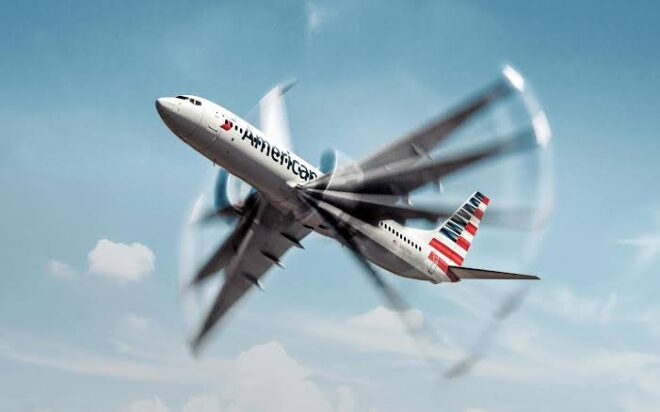
United States senator Jeff Merkley, an Oregon Democrat, wasn’t happy when he boarded an American Airlines flight from DFW to Portland in early July. The day before, the airline had adjusted its COVID-19 safety policies and resumed selling every available seat, rather than leaving most middle seats empty as it had been doing since the onset of the pandemic. Merkley took to Twitter to voice his displeasure.
“@AmericanAir: how many Americans will die [because] you fill middle seats, w/ your customers shoulder to shoulder, hour after hour,” he wrote above a selfie showing the cabin nearly full of passengers behind him. “This is incredibly irresponsible. People eat & drink on planes & must take off masks to do so. No way you aren’t facilitating spread of COVID infections.”
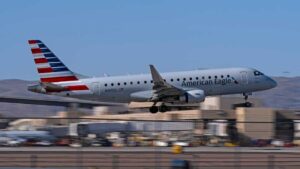
The Twitter masses piled on. “The greed of @AmericanAir is breathtaking. After being bailed out by our taxes they’re stuffing people in like sardines to make more money.” “I have had a deep, visceral loathing for American Airlines for a very long time. They’ve always been the worst airline I’ve ever traveled on.” And this, from model and activist Chrissy Teigen, soon amplified by her more than 13 million followers: “Not to be dramatic but American Airlines only cares about money and doesn’t care if you get sick and die.”
Despite that and other backlash, which included the head of the Centers for Disease Control and Prevention testifying to “substantial disappointment with American Airlines” at a Senate hearing that same week, the company continued to fill every seat it could on its sharply reduced schedule of flights. To many observers it seemed the ultimate example of a theme among most major airlines over the past two decades—squeezing customers for every penny while turning to the government for a handout in an economic downturn.
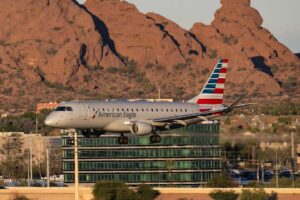
The litany of offenses is familiar: Bag fees (pioneered by American). Change fees. Fees for the privilege of selecting your (smaller and smaller) seat. All of these and more have left many travelers feeling extorted. And Fort Worth–based American has been at the forefront of many of the changes. As longtime transportation analyst Seth Kaplan says, “American has tried harder to really push the envelope.” It doesn’t help that the airline has also developed a reputation for poor service. In 2019, well before COVID-19 struck, American’s on-time rate ranked among the worst in the industry, and it canceled more of its flights than any other domestic carrier.
Meanwhile, starting in 2014, the company had been booking record profits (more than $7.6 billion in 2015). But rather than save that money for a rainy day, American gave its shareholders (and executives) handsome payouts thanks to aggressive stock buybacks. At the same time, it racked up billions in debt to pay for hundreds of new planes. Then came the coronavirus. By the time of Merkley’s tweet, the airline had accepted nearly $6 billion in federal pandemic bailout money and would soon plead for more to prevent mass layoffs.
American executives dismiss any suggestion that they have acted irresponsibly—about money or passenger safety. They’d stockpiled more than $7 billion in cash by the beginning of 2020 and figured that was enough to weather a downturn—just not one anywhere near as severe as what happened. They dispute claims that they’ve compromised the health of passengers and defend the decision to pack pandemic-era planes by emphasizing the cleaning regimen between flights and the hospital-grade filtration system that entirely replaces a plane cabin’s air every few minutes. They argue that the airline was responding to what customers wanted, in the same way that all those hated fees let it offer lower fares. Selling middle seats to willing fliers during a time of social distancing, in other words, is smart business, even if it whips up an angry Twitter mob.
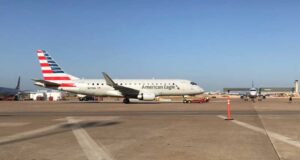
What remains to be seen is whether American has finally gone too far—whether cold, short-term calculations about what the market will bear during a pandemic will have a lingering effect on travelers’ willingness to book American when air travel returns to normal. “Overnight, you can become that ‘ugh’ carrier,” warns Dennis Tajer, a 28-year veteran American Airlines pilot and a spokesman for its pilots union. “When you know that there’s more seats filled, and then the service is not reliable, and people don’t seem happy, it all gets balled up into you’re not humanizing air travel. You’re dehumanizing it.”
How has American survived its poor reputation among fliers, and why is it acting as if it can continue to do so? One answer is that consumers face extremely limited choices when it comes to flying. At some small airports, there’s no choice among airlines at all. In Texas, the major airlines practically monopolize several of the largest airports. American accounts for more than 80 percent of the traffic at DFW; United for about 77 percent at Houston’s George Bush Intercontinental. Southwest carries more than 90 percent of the passengers at both Dallas Love Field and Houston Hobby. Combined, those three airlines have carved out about 70 percent of commercial air traffic in the state. That gives individual customers relatively little power to prevent airlines from making unpopular but lucrative decisions. “I don’t want it to be depressing, but if you are in an oligopolistic business, that’s exactly what happens,” says Rice University associate business professor Anastasiya Zavyalova, who studies corporate reputation management.
So, what’s the drag of being the “ugh” carrier in the midst of the worst crisis the industry has ever faced? Maybe none at all. Maybe American knows exactly what it’s doing.
inding its way to the global headquarters of American Airlines, Skyview Drive passes carefully landscaped patches of drought-resistant grasses, trees, and cacti just south of DFW airport. One sunny, 90-degree morning in August, thousands of parking spaces sit empty in the garage across from a gleaming new office building, Skyview 8. Opened last fall as part of a $350 million project to expand the corporate campus, the building now looks like a monument to the optimism that pervaded the airline industry prior to the pandemic. Inside, a three-story-high ceiling over the circular lobby resembles a giant jet turbine. Above the cafeteria hangs a long, twisting white sculpture built from fan blades by employees at the airline’s Tulsa maintenance center. The piece, Tulsa Vertere, is meant to evoke the swirling vortices of air that trail off the wingtips of a plane in flight.
Though the building was designed to accommodate almost six thousand workers, on this day only about five hundred are working on-site. Chairman and CEO Doug Parker, who just the week before joined other airline executives in Washington to lobby Congress for another round of federal bailout funds, eases back into his chair in a glass-walled conference room overlooking the atrium. “It’s a full-blown crisis,” he says of the industry’s recent collapse. “I don’t think about much else.”
Parker, who was CEO of Tempe, Arizona–based America West Airlines on September 11, 2001, has seen his share of ups and downs in the industry. He came up as a numbers guy, first as a financial planner at American in the eighties, then as a vice president at Northwest (now Delta), then CFO and finally CEO at America West. It was a famously volatile period in the industry, as old airlines went out of business or consolidated and new ones emerged following federal deregulation in 1978. Parker was ten days into his CEO job at America West on 9/11, and if it weren’t for the government loan he ended up securing, the airline would have gone out of business. Instead, he positioned the business to be acquired by US Airways four years later and landed himself in the CEO role of the larger company. Eight years after that, in 2013, he pulled off the same trick when American and US Airways merged, this time landing himself in one of the most powerful positions in the airline game anywhere in the world.
By then, all the consolidation had reduced competition to the point that just four airlines—United, Delta, American, and Southwest—accounted for more than 80 percent of commercial air travel in the United States. Diminished competition resulted in higher prices and, from most carriers, worse customer service. But it also ensured more reliable profits for each of the big four. And for years, there was no louder cheerleader for the idea that the industry had finally sorted itself out than Parker. He wasn’t shy about publicly professing that his company would never lose money again, even in an economic downturn. “We’ll have good years and bad years, but we won’t have disasters,” he said during a panel session at one industry conference in 2017. “We won’t go through the kinds of ebbs and flows we’ve had in the past. Certainly we’re still cyclical, but the downtimes are going to be a lot better.”
That attitude—along with billions in annual profits buoyed by low fuel prices—does much to explain American’s decision to pursue billions in spending, while piling up vast debts, in recent years. Parker’s bet was that, if his read on the industry’s stability was right, American’s steady profits would remain plentiful enough to keep its planes flying, keep its creditors happy, and keep billions in cash on hand in case of emergency.
Only, the good times didn’t keep rolling. And the magnitude of the bad times that arrived with COVID-19 was unprecedented.
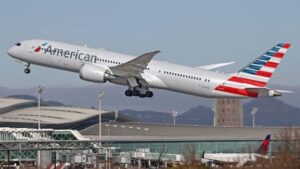
All the airlines saw their business collapse this year. In the first week of April, at the height of the pandemic lockdowns, American had twice as many cancellations as new tickets sold. Early on during the pandemic, the airline was losing about $70 million each day.
By summer, it managed to reduce that number to $30 million daily. Slashing the flight schedule, retiring some planes, and laying off 30 percent of its corporate management and support staff was a start. Skyview 7, a 90,000-square-foot IT support building that sits across a creek from Skyview 8 and opened at the same time, was shuttered, and its remaining staffers were reassigned to offices elsewhere. Construction was also halted on Skyview 6, a planned $250 million hotel complex intended to house American workers in town for training sessions. The building’s unfinished steel frame quietly towers in full view from Skyview 8’s central atrium and Parker’s desk—a fitting symbol of the uncertainty into which a global pandemic unceremoniously thrust the airline industry.